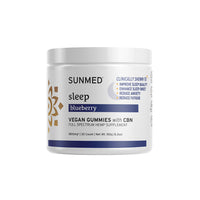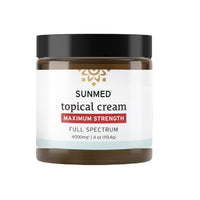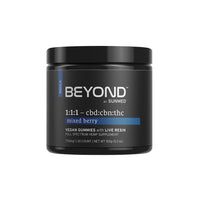8 health benefits of peppermint

Medically Reviewed by: Dr. Caley Scott, ND
The most transformative health and wellness keys are often found in unsuspecting places. Take peppermint, for example — you’ve probably tried this common herbal remedy in teas, treats, and other everyday recipes.
But did you know that behind this simple plant is a world of health benefits waiting to be unlocked? It’s not just anecdotal evidence that supports this — many modern studies and clinical trials show it to be true, as well.
Peppermint is just one example of how one simple plant deliver various health benefits you might not have known about. Since peppermint is a secondary ingredient in some of our most popular products, we think it’s worth investigating the science behind this plant and sharing its potential so you can discover even more.
Let’s take a fresh look at one of the world’s favorite herbs and see what this plant compound has in store for health, wellness, and therapeutic benefits.
What is peppermint?
Peppermint (Mentha piperita) is a perennial plant native to Europe and the Middle East. It’s a hybrid mint, combining watermint and spearmint, and has surpassed those two plants in terms of cultivation and popularity through the years.
The peppermint plant is quickly recognizable, with square, smooth stems, and dark green leaves. The signature small purple flowers are arranged in a spike formation at the top of the stems, while reddish veins and small hairs are usually found on the leaves.
Because peppermint is a resilient, perennial plant, it’s fairly easy to cultivate at home. However, most of the world’s peppermint plants are grown for commercial purposes at scale, and its refreshing aroma and therapeutic characteristics are used for many different products.
Nowadays, you might find peppermint in everything from over-the-counter herbal medicines to beverages, chewing gums, candies, and more. Peppermint essential oil is popular in the field of aromatherapy, as well as skin creams, soaps, shampoos, and other cosmetic applications.
There’s no shortage of use cases for peppermint, and you probably have some peppermint products in your house or medicine cabinet right now. With bioactive compounds like menthol, menthone, and various flavonoids and phenolic acids, there are likely many more peppermint products we can still look forward to.
What are the potential health benefits of peppermint?
As we start to examine the benefits of peppermint oil and the plant in general, remember that these compounds are highly adaptive and can be used even if you don’t have urgent symptoms or discomfort. Peppermint is a natural herb with minimal consumption risk, so feel free to enjoy the herbal remedy at any time, for any reason.
With that said, let’s check out the health benefits peppermint offers and cover a range of use cases that you may encounter on your wellness journey.
1. Digestive soothing support
The next time you’re dealing with an upset stomach or gastrointestinal discomfort, peppermint may offer the soothing effects you need at the moment. Whether you’ve got a minor case of heartburn or you’re dealing with indigestion, the active organic compounds in peppermint could make a difference.
Some even find that peppermint extract or tea can help ease feelings of constipation, menstrual cramps, and related issues with bloating. Of course, keep in mind that digestive conditions must be addressed with advice from your health care provider — peppermint is not a cure-all or official remedy.
However, the soothing mix of hot water and herbal tea might offer some short-term comfort when dealing with general stomach problems, and without major risks, it’s worth adding to your list of at-home remedies.
2. Reduced tension and discomfort
General tension and uncomfortable sensations can hold you back in life, whether it’s a headache, stiff joints, or a general sense of unease. Peppermint tea has the unique ability to calm and center your mind while bringing a feeling of balance to the body.
Many of us fall into the trap of reaching for another cup of coffee or caffeinated tea when we feel nervous or stressed during the day. Peppermint tea offers another way to return to inner balance with a caffeine-free option that keeps you focused and alert.
From addressing tension in the head and neck to easing joint creaks or muscle spasms, the benefits of peppermint tea are endless. Try it as a go-to herbal remedy or complementary add-on to your daily routine.
3. Oral health and freshness
Nobody wants to deal with bad breath, especially on a chronic level. Brushing your teeth with peppermint can offer a quick fix, while peppermint gum can be useful in a pinch — but what if you want to get to the root of oral health and keep bad breath at bay for the long term?
True oral health goes beyond masking odor that emanates from the mouth, gums, and teeth. Dentists and hygienists urge patients to care for their teeth in a holistic manner, which means upkeep with flossing, brushing, mouthwash, and dental office visits.
Peppermint can play a role at every level in the dental hygiene plan, so use it from top to bottom and address oral health the way it’s meant to be. Don’t rely solely on quick fixes or cover-ups — genuine health requires a complete game plan, and peppermint can help.
4. Mental clarity and focus
We all need a bit of mental clarity from time to time. Maybe you’re facing a deadline at work, or you’ve got a creative project that demands extra energy on the weekends. Peppermint isn’t a nootropic plant in any official capacity, but it can offer a sense of calm and focus that helps you stay dialed in on your most critical tasks.
We can attribute this to the stimulating effects of peppermint — it’s nowhere near as powerful as caffeine, but you can couple peppermint with green tea or use extracts in your coffee to achieve a supportive effect.
Combine ingredients carefully, and you may unlock a level of performance that helps you reach new heights of productivity and creation.
5. Skincare and cooling effects
You might think of peppermint tea or extracts as something you sip slowly or enjoy in a recipe, but most of today’s peppermint-based products are actually for the skin and body.
You’ll find peppermint in soaps, topical creams, and much more, and many of the soothing, cleansing properties are still at play in these products. In fact, you can feel the signature “cooling” feeling of peppermint when it’s applied to the body.
Find a skincare product that features peppermint and use it when you need soothing support or tension relief. Sunmed’s Full Spectrum Relief CBD Cream is one of the best topical products available, featuring CBD, peppermint, MSM, and other powerful plant compounds.
You never know when tension may strike, especially if you’ve got achy joints, tendons, or muscles. Keep your go-to peppermint-based topical nearby so you can always get the benefits of this herb along with CBD and other proven ingredients.
6. Seasonal allergy support
When allergies get the best of you, it can feel like trudging through life in shallow water or fog. You might have your favorite over-the-counter allergy medication always in stock, but maybe you’re looking for a natural remedy that offers a different type of support and soothing effects.
Peppermint has a unique ability to soothe the areas most impacted by seasonal allergies, from your nose and throat to your respiratory system and digestive tract.
With a natural remedy like peppermint, you can address several symptoms at the same time and reduce the strain on your body’s immune system during allergy season. This can help you stay sharp, energized, and feeling like yourself, no matter what the season brings.
7. Respiratory support and decongestant
Ever feel like the perfect storm of discomfort is swelling in your sinuses or lungs? Before you reach for over-the-counter meds, a soothing glass of peppermint tea might offer some instant relief. Peppermint’s active compounds may clear unwanted bacteria from the esophageal tract while soothing the lungs and reducing congestion in the nose.*
These effects can be found in other herbal teas, but the cooling properties of peppermint seem to “clear the airways” more effectively, thanks to the presence of menthol and the cooling effects of the hot water vapors.
Overcoming a cold is never fun, especially if the lungs and throat are in bad shape. But with peppermint tea in your cup, you have an advantage that will help you feel better now and might even accelerate your recovery timeline.
8. Relaxation support
At the end of a long day, some peppermint tea can help your body and mind calm down and prepare for deep sleep all night. Peppermint is caffeine-free and has natural soothing effects, meaning it’s the perfect accompaniment to your evening routine.
While peppermint isn’t known as a dedicated sleep booster like lavender or chamomile, you can always pair a specific sleep aid supplement with your peppermint tea. Sunmed’s Full Spectrum Sleep CBN Tincture makes for a great pair with peppermint tea, whether you drop it into your glass or take it sublingually.
Sleep is a cornerstone of health, so use peppermint to your advantage and relax before bed as part of your evening routine. With Sunmed’s help and the power of peppermint, you’ll get the rejuvenating sleep your body and mind truly need.
What are some effective ways to consume peppermint?
You’re probably eager to try peppermint at this point, with so many health benefits awaiting you. If you’re not sure how to take peppermint in an optimal serving size while maximizing its effects, there are several proven paths you can take. Here are a few great ways to take peppermint and start enjoying the benefits of this plant for yourself.
Peppermint tea
The most consistently satisfying way to take peppermint is also the most classic. You simply can’t go wrong with a mug of piping hot peppermint tea, especially during the harsh winter months when you need it most.
Peppermint tea can be found nearly anywhere, though you might find more authentic and potent products in loose-leaf form. Master the art of brewing tea at home, and you’ll see firsthand what all the hype is about.
Fresh peppermint leaves
Peppermint doesn’t always make sense as a garnish for savory dishes, but you’ll be surprised at how versatile this plant can be in cooking. Savory stews and soups can often benefit from a hint of peppermint on top, while desserts and hot cocoa can always use some fresh mint to add character and brightness.
If you’re feeling bold, why not chew on some peppermint leaves to get the direct effects? Skip the gum and go straight to the source with the main ingredient in its natural form.
Peppermint essential oil
Peppermint essential oils can be used in aromatherapy and are also a main ingredient in your favorite soaps, shampoos, and cosmetics. You probably already use peppermint in some form, but the essential oil offers a more direct and potent way to experience this plant in full.
As you step into the world of essential oils, make sure peppermint is one of the first on your list to explore.
The bottom line
You may have known peppermint for years already, but never like this. The plant contains way more than meets the eye, from powerful flavonoids and cooling compounds to antimicrobial properties and soothing effects.
Sunmed is eager to bring peppermint into more of our products, from creams and tinctures to bath bombs and more.
Sources:
Risk factors for gastroesophageal reflux disease: the role of diet | NIH
Peppermint (Mentha piperita) Overview | Mount Sinai | NIH
By the way, doctor: What can you tell me about peppermint oil? | Harvard Health Publishing














